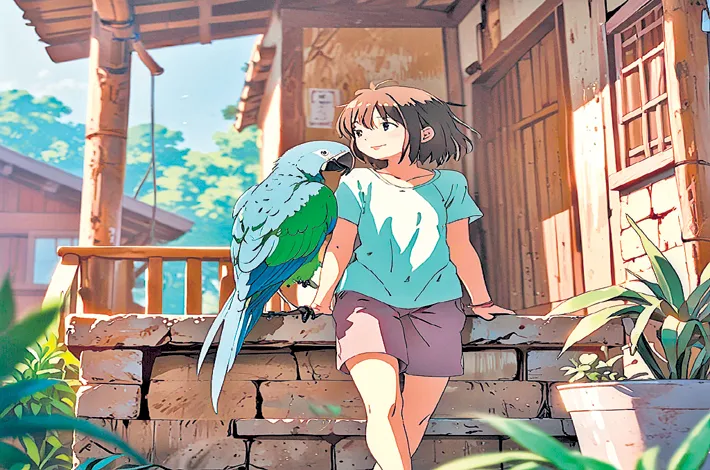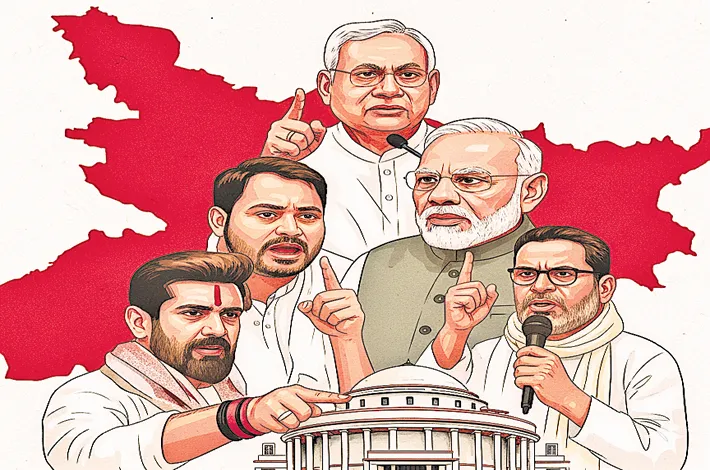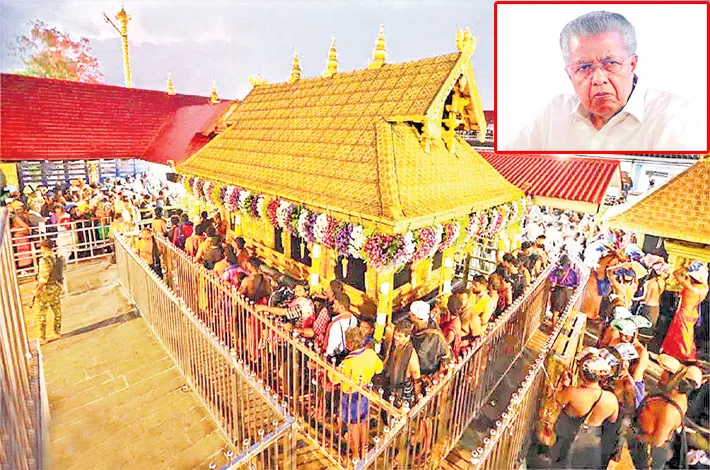The Star of Gadwal
08-07-2025 12:00:00 AM

The fort was a crumbling giant, its walls etched with carvings of dancers and warriors. Anika crept through a gap in the gate, her heart thumping. Inside, the air was cool and musty, and the corridors echoed with the ghosts of forgotten kings. She wandered until she found a stone slab carved with strange symbols: a sun, a river, and a loom.
In the heart of the ancient Gadwal kingdom, where golden sands met emerald fields and the Krishna River whispered tales of old, lived a young girl named Anika. Gadwal was a land of vibrant markets, towering temples, and weavers who wove sarees so fine they shimmered like moonlight. Anika, barely ten, was no ordinary child. She was curious, with eyes that sparkled like the stars above the kingdom’s forts, and a heart brave enough to chase any mystery.
One evening, as the sun dipped below the horizon, painting the sky in hues of saffron and rose, Anika sat on the steps of the great Chennakeshava Temple. Her grandmother, Ammamma, a weaver of legendary skill, was telling her stories of the kingdom’s past. “Long ago,” Ammamma said, her voice soft as the silk she wove, “a magical star fell from the heavens into Gadwal. It was no ordinary star but a gem called the Nakshatra Mani, said to grant one wish to whoever found it with a pure heart. It was hidden by the kings to protect it from greed.”
Anika’s eyes widened. “Where is it now, Ammamma?”
“No one knows,” Ammamma replied, her fingers tracing the intricate patterns of a saree. “Some say it’s buried beneath the kingdom, guarded by riddles only the worthy can solve.”
That night, Anika couldn’t sleep. The thought of the Nakshatra Mani danced in her mind. What would she wish for? A lifetime of sweets? A flying elephant? No, she decided—she’d wish for something to make everyone in Gadwal happy. By dawn, her mind was set: she would find the star.
The next morning, Anika slipped out of her small mud-brick home, her pet parrot, Kili, perched on her shoulder. Kili, with his emerald feathers and knack for mimicking voices, was her best friend. “Adventure, adventure!” he squawked as they headed toward the old fort on the hill, a place rumored to hold secrets.
The fort was a crumbling giant, its walls etched with carvings of dancers and warriors. Anika crept through a gap in the gate, her heart thumping. Inside, the air was cool and musty, and the corridors echoed with the ghosts of forgotten kings. She wandered until she found a stone slab carved with strange symbols: a sun, a river, and a loom.
“A riddle!” Anika whispered. She traced the symbols, thinking hard. The sun could mean the temple, where the first light fell each morning. The river was surely the Krishna, winding through Gadwal. But the loom? That was Ammamma’s domain—the weavers’ quarter, where sarees were born.
Anika raced to the temple first. The priests were chanting, and the air smelled of jasmine and sandalwood. She searched every corner, behind statues and under flagstones, but found nothing. Kili, impatient, squawked, “Look harder, silly girl!” Anika giggled and moved on to the riverbank.
The Krishna sparkled under the midday sun, its waters alive with fish. Anika waded in, her toes sinking into the cool mud. She searched for hours, diving under reeds and peering into hollows, but the Nakshatra Mani was nowhere. Tired and muddy, she sat on the bank, frowning. “Maybe the loom is the key,” she muttered.
The weavers’ quarter was a riot of color. Looms clacked rhythmically, and sarees hung like rainbows. Anika went to Ammamma’s workshop, where her grandmother was weaving a saree with golden threads that glowed faintly. “Ammamma,” Anika said, “do you know anything about a loom in a riddle?”
Ammamma’s eyes twinkled. “The oldest loom in Gadwal,” she said, “is in the weavers’ guildhall. It’s said to hold secrets in its threads.”
Anika dashed to the guildhall, Kili flapping behind. The ancient loom stood in a dusty corner, its wood worn but sturdy. Anika ran her fingers over it and felt a loose panel. Her heart raced as she pried it open, revealing a small, carved box. Inside was a gem that pulsed with light, like a star trapped in crystal—the Nakshatra Mani.
Anika’s hands trembled. “I found it!” she whispered. Kili squawked, “Wish, wish!” But Anika hesitated. A wish could change everything, but what did Gadwal need? She thought of the weavers who toiled long hours, the farmers who prayed for rain, and the children who dreamed of stories. She closed her eyes and whispered, “I wish for Gadwal to thrive, for every heart to find joy, and for our stories to live forever.”
The gem flared, and a warm light spread across the kingdom. When Anika opened her eyes, the gem was gone, but the air felt different—lighter, brighter. She ran back to Ammamma, who was weaving a saree that shimmered like never before. “Child,” Ammamma said, “the kingdom feels alive today. What did you do?”
Anika only smiled. Over the days that followed, Gadwal bloomed. Rains came to the fields, the markets buzzed with laughter, and the weavers’ sarees were sought across the land. Anika never told anyone about the Nakshatra Mani, but Kili, ever cheeky, would squawk, “Star girl, star girl!” whenever she passed.
And so, in the kingdom of Gadwal, where the river sang and the looms danced, Anika’s wish wove a thread of joy through every heart, proving that a brave child with a pure heart could light up a kingdom brighter than any star.








